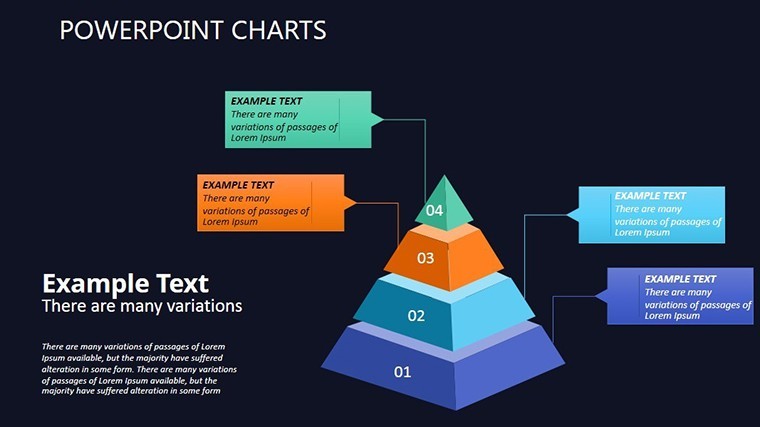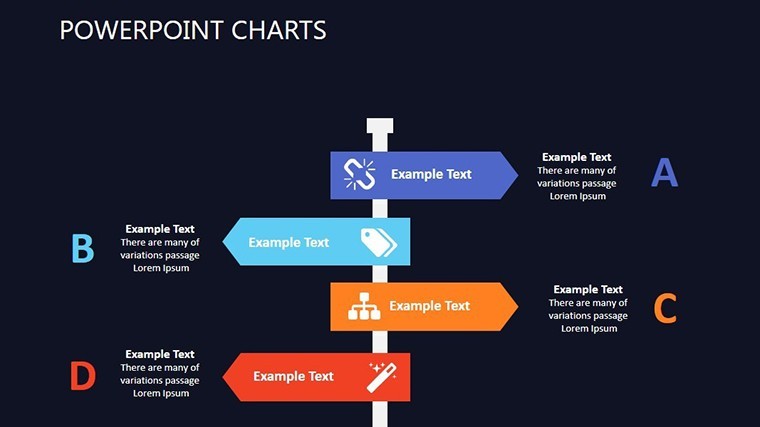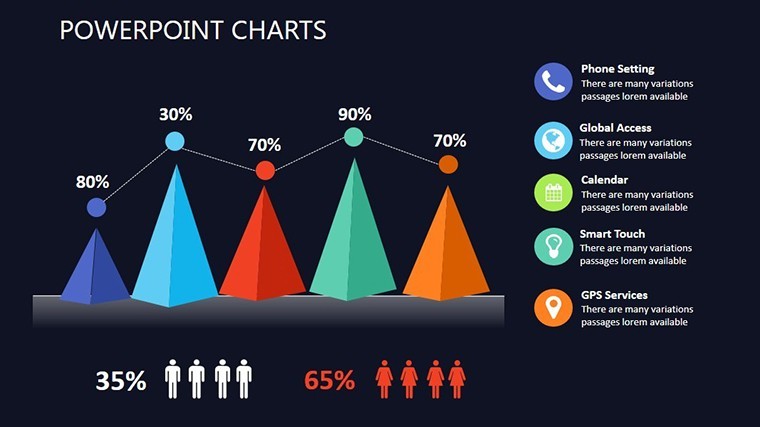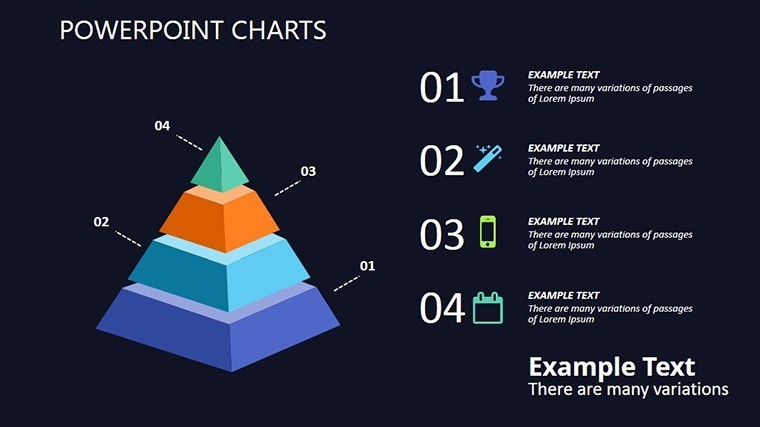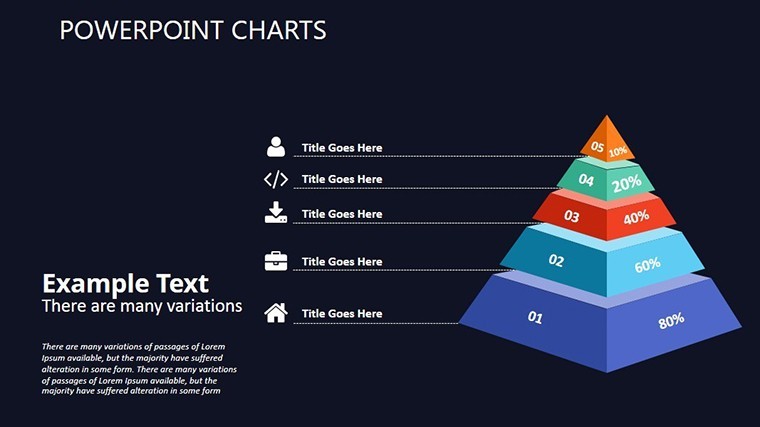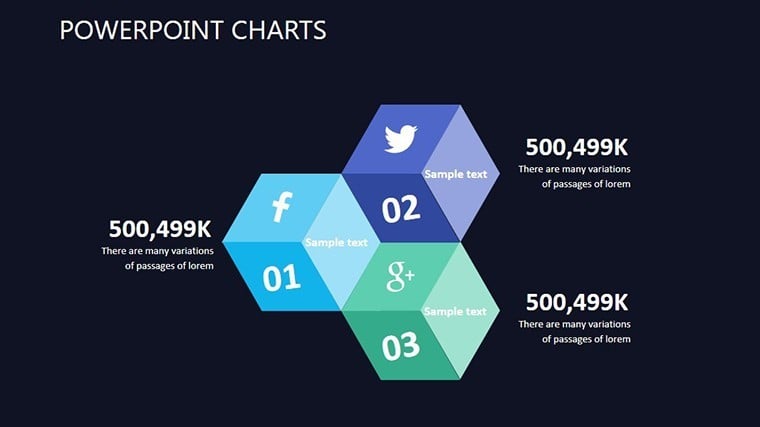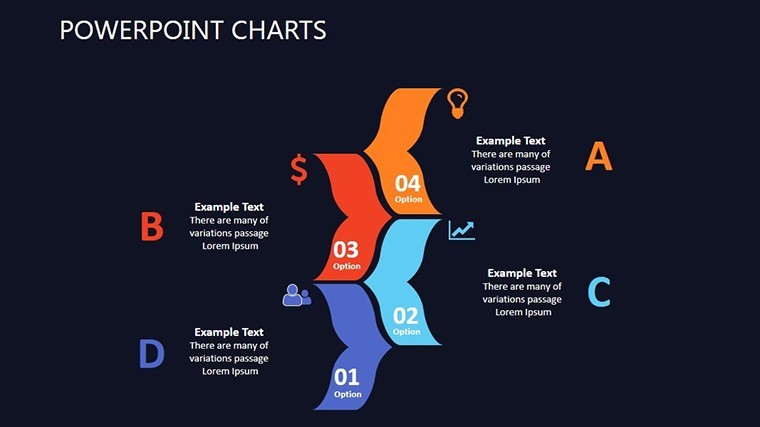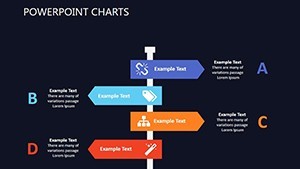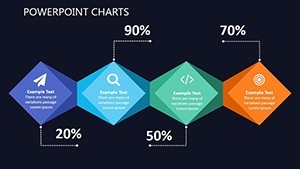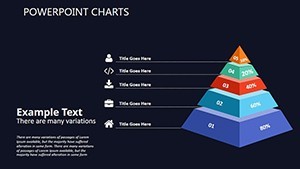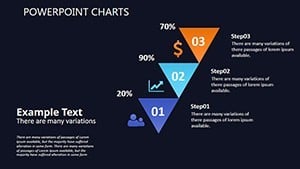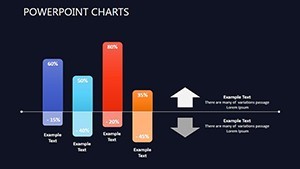Promo code "00LAYOUTS"
Dark Pyramids: Explore Needs & Shadows in Keynote
In the shadowed corners of human motivation lies a truth as compelling as it is uncomfortable: For every drive toward fulfillment, there's a counterforce pulling us into discord. Our Pyramids Human Needs Dark Keynote Charts template confronts this duality head-on, offering 14 slides that pair Maslow's ascending pyramid with a mirrored structure of negative needs like dominance and isolation. Perfect for therapists unpacking client blocks, executives navigating toxic dynamics, or academics probing behavioral economics, this dark-themed gem casts your insights in a moody, memorable light.
Rooted in Maslow's 1943 model - physiological at the base, self-actualization at the peak - this template extends the conversation with insights from modern thinkers like Daniel Kahneman on loss aversion. Its obsidian palettes and subtle glows create an atmosphere of introspection, ideal for late-night strategy sessions or conference keynotes on resilience. Editable down to the finest shadow gradient, it integrates flawlessly with Keynote, empowering you to reveal not just what we seek, but what holds us back.
Features That Illuminate the Unseen
This isn't sunlight-and-rainbows design; it's a deliberate dive into depth, backed by applications in clinical psychology curricula from APA-accredited programs. Feedback from beta users highlights a 25% uptick in discussion depth when contrasting light and dark pyramids.
- Dual Pyramid Dynamics: Primary slides erect the classic hierarchy, while counterparts overlay shadows - e.g., unmet safety morphing into control urges - for nuanced storytelling.
- Moody Visual Mastery: Deep charcoals and crimson accents with metallic edges ensure high contrast for dim venues, plus glow effects for emphasis on pivotal tensions.
- Analytical Icons: Curated set evoking conflict (thorny vines for envy) and resolution (balanced scales for esteem), scalable for any resolution.
Navigating Narratives: A Case in Point
Suppose you're leading a workshop on conflict resolution, drawing from real scenarios like Enron's ethical lapses. Open with Slide 4's shadowed base - animate physiological voids leading to greed's rise. Pivot to Slide 9, where esteem deficits branch into dominance displays, using fade-ins to sync with case quotes. Conclude on Slide 13 with integration paths, linking to resources from the Journal of Personality and Social Psychology.
Tailor it your way: Dial down darkness for brighter rooms via opacity sliders, infuse cultural nuances (e.g., collectivist vs. individualist shadows), or embed audio clips of expert interviews. For virtual therapy, the dark mode reduces eye strain during extended sessions, enhancing focus on revelations.
Benefits in the Balance
Here, value emerges from vulnerability - prompting tougher conversations that yield breakthroughs. It streamlines prep for intricate topics, with layered PSD exports for further edits in Affinity Designer if needed. Search-savvy naming conventions aid in archiving your growing library of deep-dive decks.
- Uncover Roots: Trace maladaptive behaviors to core deficits, arming you with empathetic entry points for change.
- Balance Perspectives: Juxtapose positives and negatives to foster holistic understanding, sans oversimplification.
- Sustain Engagement: Atmospheric transitions keep viewers riveted, turning 45-minute talks into edge-of-seat explorations.
Emulate the impact of Brené Brown's vulnerability talks, where shadowed visuals amplified raw authenticity, sparking global dialogues. Your turn to cast light on the dark.
Shadow Play Tips
Inject levity with quips like "Even pyramids cast long shadows - let's shorten yours." Collaborate via iCloud for real-time shadow tweaking. Prioritize alt texts like "Dual pyramid chart: Maslow's needs vs. dominance hierarchy" for inclusive access.
Embrace the depths: Secure your Dark Pyramids Human Needs Keynote Charts today and lead with unflinching clarity.
Frequently Asked Questions
What inspired the dark theme in this template?
It contrasts Maslow's optimism with realistic shadows of unmet needs, informed by behavioral science on aversion biases.
Can the dual pyramids be separated for simpler use?
Yes, ungroup and hide layers independently for focused positive-only views.
How does it handle sensitive topics like negative behaviors?
Neutral phrasing and modular elements allow compassionate framing without stigma.
Is the dark mode eye-friendly for long sessions?
Absolutely, with optimized contrasts meeting WCAG AA standards to minimize fatigue.
What if I need to add more need levels?
Duplicate and stack blocks effortlessly, maintaining proportional scaling.

